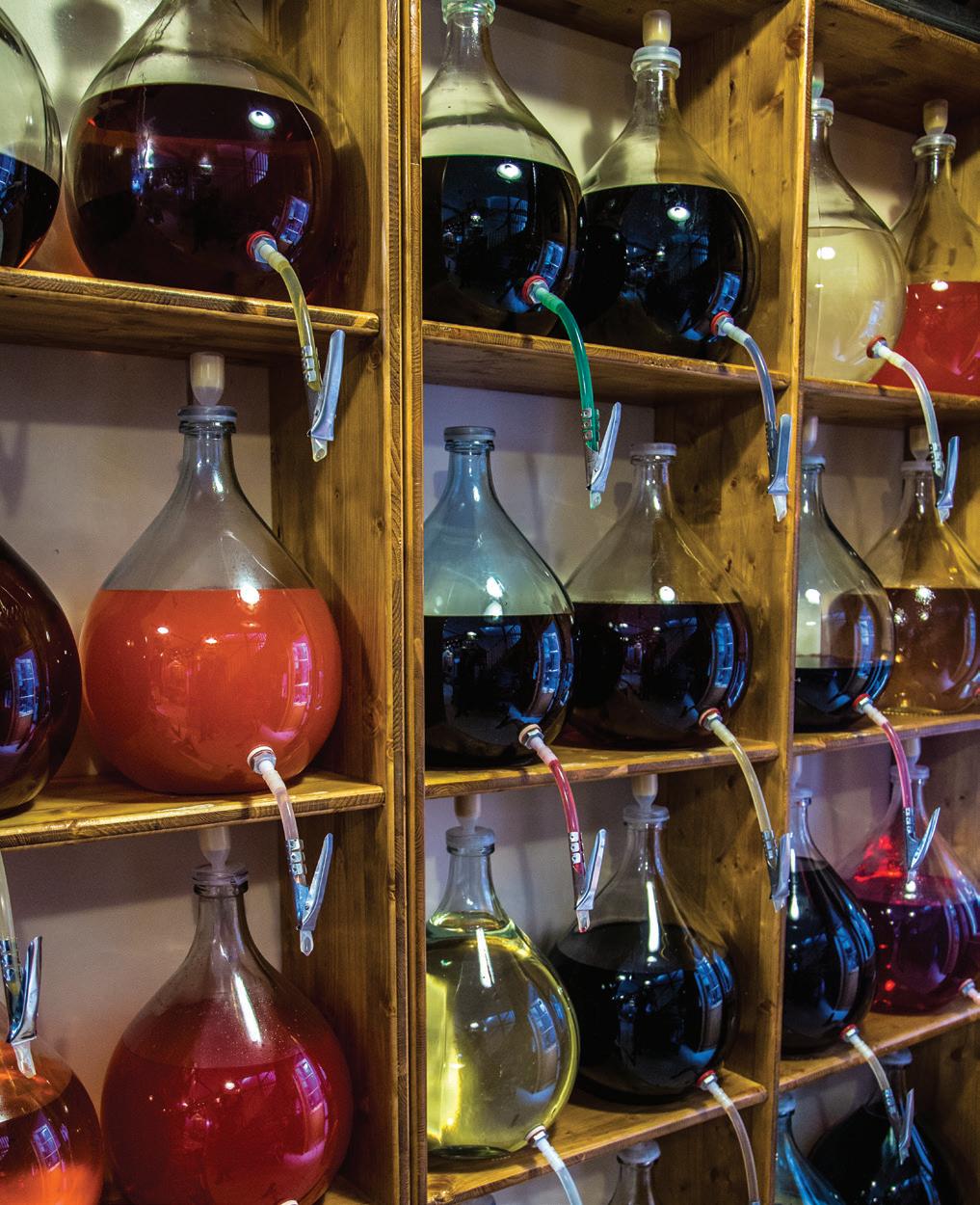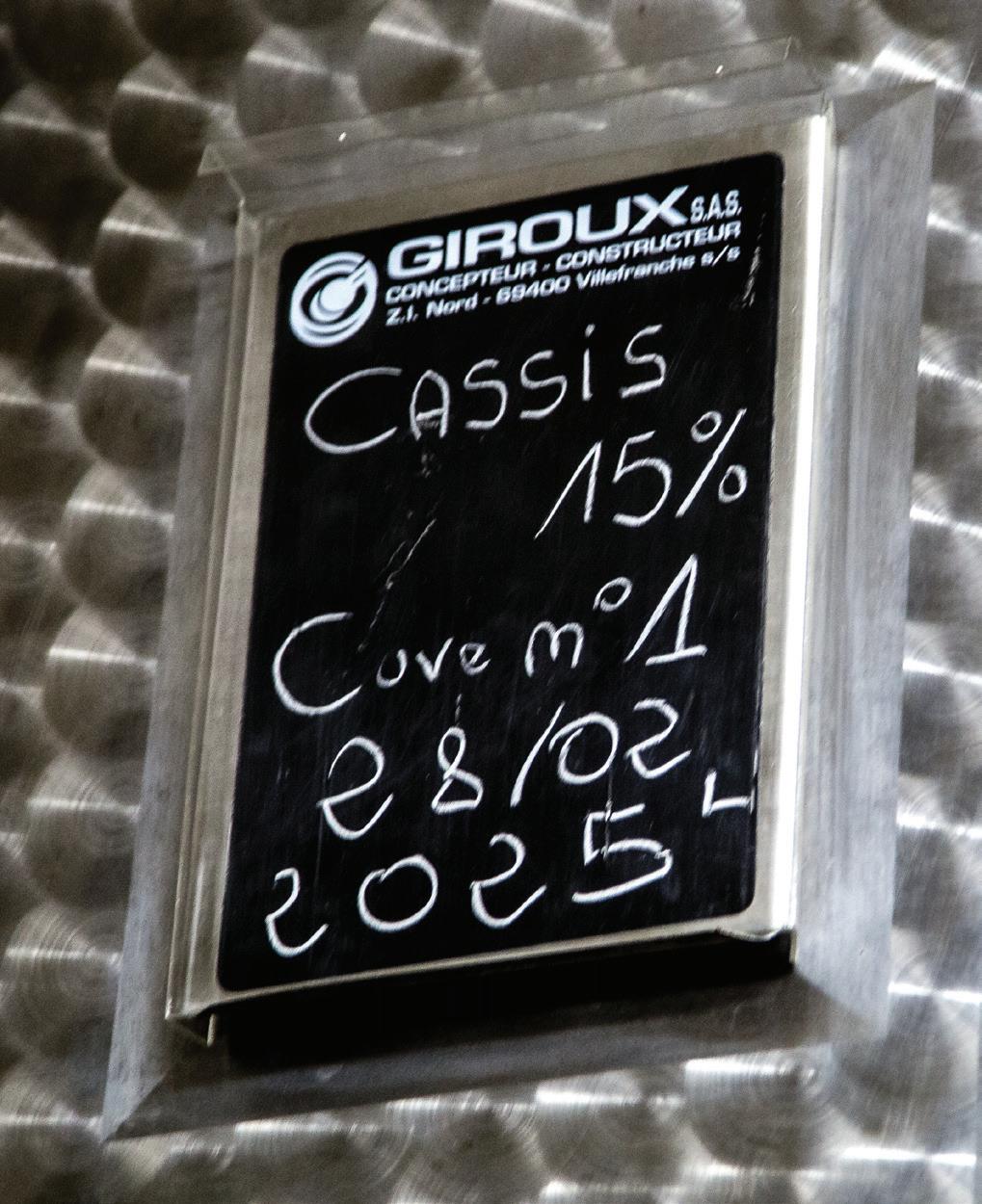
5 minute read
Briottet
- DIJON, FRANCE -
A RANGE OF CRÈME LIQUEURS BUILT AROUND A CLASSIC ‘CRÈME DE CASSIS DE DIJON’
Advertisement
HISTORY OF CRÈME DE CASSIS DE DIJON | Crème de cassis, a liqueur made with black currants, is believed to have been invented in 1841 in the French town of Dijon. It would ultimately replace Ratafia de Cassis as the preferred cassis drink, which was made using wine and eau-de-vie rather than the neutral alcohol used today.
In the 1920s, Dijon courts determined that Crème de Cassis de Dijon could only be produced in Dijon, though official French appellation d’origine contrôlée status has yet to be established. Protection for true Crème de Cassis de Dijon took a big step forward in 2012, when it received Protected Geographical Indication status from the National Institute for Origin & Quality, which is part of the French Ministry of Agriculture.
The Kir, a popular classic cocktail, also has its roots in Dijon. In 1945, Canon Félix Kir was elected mayor of Dijon, a position he would hold until his death in 1968. He was a strong advocate for Crème de Cassis de Dijon, and would serve a cocktail made with the crème and a local wine, typically aligoté, to his guests, and the cocktail would eventually bear his name.
SIX GENERATIONS OF MAISON BRIOTTET | The Maison Briottet story begins in 1836 when the firm was founded by vineyard owner James Demontry, though at the time the business just traded wine. Edmond Briottet eventually took over running the firm, and soon thereafter acquired his father-in-law’s wine trading company along with the facility at 12 Rue Berlier in the historic center of Dijon, where the company operates today.
The location of the production facility is an important part of the Briottet vision, though it presents significant logistical challenges for production. Access for trucks on the small one-way street is difficult, and space is extremely limited, creating a limit on how much can be produced. Everything is made in small batches and only a tiny amount of stock is kept on hand.
As Crème de Cassis de Dijon became more popular over time, Edmond transitioned his company away from trading wine and towards the production of the crème. By 1949, Edmond’s son Andre produced Crème de Cassis de Dijon exclusively, and the company was making a name for itself in the local industry through active involvement in organizations furthering the development of Crème de Cassis de Dijon.
Fifth generation Gérard Briottet joined the company in 1977, and recently retired in 2014. He passed operation of the company on to his children, Vincent and Claire Briottet, who joined the company in 2010 and look to take the Briottet legacy into the future.
LEFT | Briottet is located in the historic center of Dijon, surrounded by gothic churches and grand palaces. This photo features the spire of the Church of Notre-Dame of Dijon, located a short walk from Briottet. Considered a masterpiece of 13th-century gothic architecture, it is a popular destination for visitors, particularly to see the owl on the north side of the church. It is said that if you touch the bird with your left hand while making a wish, luck will follow
BRIOTTET CRÈME PRODUCTION | All Briottet crèmes follow a similar production
process, with the variance between expressions coming from the fruit used. To make a crème, the fruit is macerated in a neutral spirit for a minimum of two months. The infusion is removed and the fruit is pressed to extract all the flavor. Sugar and water are added over a period of six hours while being mixed, and after resting for a short period of time, the crème is finished.
BRIOTTET CRÈME DE CASSIS DE DIJON Crème de Cassis de Dijon is Briottet’s flagship product, and represents over 50% of its production. Noir de Bourgogne black currant fruit is sourced from four local fields with harvest typically taking place in July. Available in 750ml & 375ml. 20% ABV
HIGHEST RECOMMENDATION “Crème de Cassis doesn’t come any better than this; a masterpiece.” - F. Paul Pacult, The Spirit Journal 96 - 100 POINTS & CLASSIC | Wine Enthusiast
BRIOTTET CRÈME DE FRAMBOISE Briottet Crème de Framboise is made using raspberries from Chile, specifically the Heritage variety, which was chosen for its strong, bright flavor. 18% ABV
HIGHEST RECOMMENDATION | F. Paul Pacult, The Spirit Journal
BRIOTTET CRÈME DE MÛRE Blackberry crème. 18% ABV
96 POINTS & SUPERB | Wine Enthusiast
BRIOTTET CRÈME DE PÊCHE DE VIGNE Briottet Crème de Pêche de Vigne is made using small, wild peaches grown near Beaune in the southern part of Burgundy. The peaches used are more acidic than regular table peaches, and are macerated whole. 18% ABV RECOMMENDED | Beverage News
BRIOTTET CRÈME DE BANANE Briottet Crème de Banane is made using the natural flavors of bananas sourced from Costa
Rica. 25% ABV “It has a stunningly fresh, authentic banana flavor” - Master of Malt
BRIOTTET CRÈME DE BERGAMOT Bergamot oranges are the result of crossing a bitter orange variety with a lime variety. Its flesh is slightly acidic and bitter. 18% ABV
BRIOTTET CRÈME DE PAMPLEMOUSSE ROSE The grapefruit or pomelo rose originates in the Antilles archipelago in the Caribbean. 18% ABV
- F. Paul Pacult, The Spirit Journal -



TOP | Fifth generation Gérard Briottet explains the farming practices at one of the blackcurrent fields in the Côte d’Or area of Burgundy. Briottet only works with four growers, with whom they have established close relationships over many years. Gérard retired in 2014 and turned the business over to his children, Vincent and Claire
BOTTOM LEFT | Glass demijohns of the many crèmes and liqueurs Briottet produces for sampling at its facility in the historic center of Dijon BOTTOM RIGHT | A batch of cassis is macerating in a stainless steel tank. Briottet cassis follows a simple recipe of noir de bourgogne black currant, neutral alcohol, water and sugar. The color is 100% natural and derived from the color of the black currant










